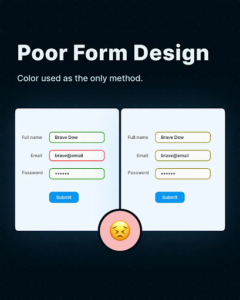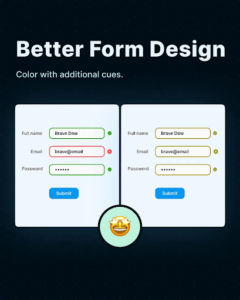Modern Slavery Statement 2024
We at the Jonas Family of Companies believe that any form of forced labor has no place in our operations. Our Modern Slavery Statement details our risk system in relation with the Modern Slavery Act of 2015.
The Jonas Family Modern Slavery Statement can be downloaded below.
Jonas Metals Modern Slavery Statement
Collapse of Port Talbot’s Steelworks
The collapse of Port Talbot’s steelworks is a death knell for industrial, working-class Britain.
Keith Gildart – The Guardion
UK industrial towns offered not only well-paid jobs, but a whole culture. A radical alternative is desperately needed
Last week, Tata Steel in Port Talbot announced the immediate closure of its coke ovens. These ovens create the coke that ultimately powers the blast furnaces, which, as was announced in January, are due to be shut down. The decision by Tata to close the furnaces sent shock waves through the community. There are set to be 2,800 job losses – a huge blow for a small town that has already undergone significant cuts to its steel industry over the past decades. A final chapter in the decades-long deindustrialisation of the British economy appears to be coming to a close.
Plant closures are never only about the loss of work, but also the cultural and psychological effects on the people who are made unemployed, on families and communities. Steel provided well-paid, unionised and skilled employment, and created a working-class culture that gave the country Labour MPs, athletes, musicians, writers, artists and a sense of community and collective purpose. Port Talbot even gave the world the cinematic presence of Richard Burton and Anthony Hopkins.
Such a distinct, collectivist culture was crucial to the development of Wales, central Scotland and parts of England in the 19th and 20th centuries. At its peak in the 1960s, Port Talbot steelworks employed about 18,000 workers, complemented by the nearly 60,000 employed in south Wales coalmines. These industries after the second world war offered an alternative vision of industrial relations, investment, community development, and a Wales (and Britain) with working-class agency at its centre.
The seeds of the destruction of this world of labour were planted with the mass closures of coalmines in the late 1950s and then the 1960s, with patchy attempts by governments to mitigate the effects. But the election of a Labour government in 1974 granted a temporary reprieve to the steel and coal industries. The subsequent Plan for Coal envisaged a long-term future for the industry with the introduction of new technology, skills and high wages. In these years, a miner could become an engineer, a mine manager, an official of the National Coal Board, a trade union official or a Labour MP. Others could take advantage of the education provided by the National Union of Mineworkers and enter university. Having started work as a coalminer in 1985, I took this path in 1992, studying history and politics and eventually became a university professor. Yet with the election of Margaret Thatcher in 1979, a darkness descended over the steel and coal communities.
The warning shot for British Steel and Welsh industry came with the closure of the furnaces at Shotton in March 1980, when 6,500 jobs were axed in a single day. The steel strike of the same year ended in defeat for the steelworkers. By the time Ian MacGregor left his role at British Steel in 1983 to move on to the National Coal Board, he had cut the steel workforce by almost 60% in only three years. After the crushing defeat of the miners in their year-long fight against closures in 1984-85, pits rapidly disappeared from the British landscape. The destruction of communities quickly followed. Both the moderate leadership of the steel unions and the more militant activism of the miners could do nothing to stem the tide of unemployment, inequality, poverty and the transformation of the world of work.
What has the loss of this world ushered in? The impact can be seen not just in Port Talbot but across the post-industrial regions of Wales, England and Scotland. While that industrial world of work brought with it risks to life and health, the income, opportunities and relative security offered stability. That has been replaced by warehousing, logistics, retail parks that offer zero-hours contracts, low wages, no long-term security and hostility to trade union membership and representation. Decades after the closures, Britain’s coalfields are still feeling the long-term effects, suffering disproportionately from multiple inequalities.
The deindustrialisation of Britain and the marginalisation of the working class has also had a profound impact on political engagement and representation. Your Labour MP is now likely to be a lawyer, special adviser and expensively educated graduate, rather than a steelworker or a coalminer. Meanwhile, the organised working class has moved further to the periphery of political and civic British life. At the same time, perhaps counterintuitively, the old industrial workforce is viewed with a sense of deference rather than suspicion. Steelworkers and coalminers have gone from being labelled as industrial dinosaurs, technological Luddites and enemies within, to being almost canonised through films such as The Full Monty and Billy Elliot.
That is all very well and good, but what is really needed is an appreciation of the communities and the political alternatives that they provided. Post-steel and post-coal localities need a radical industrial policy that would bring high-paid jobs, skills and opportunities that could form the basis of a real driver of levelling up. As the Port Talbot coke ovens close, what is the government doing to fill the void?
Keith Gildart is a former coalminer, and now a professor of labour and social history at the University of Wolverhampton
2023 Aluminium Federation – ALFED Annual Business Dinner
Jonas Metals Software is pleased to be part of the Aluminium Federation – ALFED.
John Padbury (COO) and Scott Taylor (CRO) represented Jonas Metals Software at the Annual Business Briefing and Dinner. Valuable insight into the Aluminium Industry was provided by this year’s outstanding speakers.
With over 250 members in attendance it was a great event and an excellent opportunity to connect with customers, industry leaders and establish new relationships. Many thanks to Mike Dines and his successor Mark Allen as ALFED President for 2024 and 2025.
We look forward to the next year’s annual event at the De Vere Beaumont Estate in Windsor – November 2024!
Designing User Interfaces for Color Vision Deficiency – CVD
Designing User Interfaces for Color Vision Deficiency – CVD
Intelligent design must take into account many aspects including the importance of:
Color Vision Deficiency (CVD) and its implications for user interface design.
CVD, commonly but incorrectly referred to as “color blindness”, refers to a condition where individuals have limited color sensation, specifically in distinguishing reds and greens. However, it’s crucial to note that over 99% of people with CVD are not completely color blind. They may experience reduced color discrimination, making it challenging to differentiate between certain colors and shades. Therefore, using the term “color blind” is inaccurate and can perpetuate misconceptions.


It’s a Male Problem
CVD affects a significant portion of the population, particularly males. About 8% to 10% of the male population have CVD. Only an estimated 0.5% of the female population has CVD. In fact, there are approximately 300 million people with a form of CVD worldwide.
Let’s explore some key considerations when designing interfaces to address CVD and ensure inclusion for all users. To create user interfaces that address CVD.
Key strategies JMS uses when designing the latest User Interfaces.
#1. Utilizing colors and symbols: Instead of relying solely on color, incorporate additional visual cues such as
symbols or icons to communicate information. For example, in a data visualization chart, use different patterns or shapes in addition to color coding to differentiate between data points. This approach ensures that users with CVD can still interpret and understand the information being presented.
#2. Avoiding certain color combinations:Be mindful of color combinations that might pose challenges for individuals with CVD. For instance, red and green are often difficult to distinguish for those with CVD. Therefore, avoid using these colors together or ensure there is sufficient contrast between them. Utilize color accessibility tools and guidelines to select color palettes that are inclusive and readable for all users.
#3. Getting the contrast right: Ensuring proper contrast is essential for users with CVD. Opt for high contrast between text and background colors to enhance readability. Use color contrast checkers to verify that your design meets accessibility standards, making it easier for individuals with CVD to perceive and understand content.
#4. Work on the primary button: While making the primary button stand out is a common design practice, it can be challenging for color blind users to perceive. Consider incorporating different visual cues such as size, shape, or text labels to distinguish primary buttons. This way, users with CVD can identify and interact with the primary actions without relying solely on color differentiation.
By implementing these strategies, we can create user interfaces that are accessible and inclusive for individuals with CVD. Remember, designing with accessibility in mind benefits not only those with CVD but also users with other visual impairments.
Understanding the nuances of CVD and avoiding misleading terminology is crucial. By utilizing a combination of colors, symbols, proper contrast, and alternative visual cues, we can create user interfaces that cater to the needs of individuals with CVD and provide a seamless experience for all users.
At Jonas Software we continue striving for inclusive design practices that empower everyone.
Welcome Scott Taylor Our New Chief Revenue Officer

JMS is thrilled to announce the appointment of Scott Taylor as our new Chief Revenue Officer (CRO).
Scott started with Jonas Club in February 2005. He has handled many teams across the company, including Sales, Customer Care, Processional Services and International Operations.
Scott lives in Toronto, Ontario with his wife Katherine and their 2 boys and newest addition… a baby girl.
Scott enjoys spending time with his family, travelling, chauffeuring the boys to soccer and hockey, along with coaching. Scott is also fond of cooking & trying to stay in shape.
Why JMS? we asked Scott – “I’m looking for a challenge and a group with lots of potential … and I see that here”.
Welcome to the team Scott !
John Padbury Named Chief Operating Officer of Jonas Metals Software.
FOR IMMEDIATE RELEASE
John Padbury Appointed as Chief Operating Officer of Jonas Metals Software
[Oxford, 09/01/2023] – Jonas Metals Software, a leading provider of software solutions for the metals industry, is pleased to announce the appointment of John Padbury as its new Chief Operating Officer (COO). With over 30 years of experience in the metals industry, Padbury brings a wealth of knowledge and expertise to his new role.

Padbury’s career in the metals industry began in the 1990s as a developer, where he quickly established himself as a specialist in the field. He then progressed into consultancy and project implementations, honing his skills and gaining valuable insights into the industry’s challenges and requirements. His dedication and commitment led him to leadership positions, including department manager and head of business at Metalogic UK.
In his new role as COO of Jonas Metals Software, Padbury will play a pivotal role in driving the company’s operational strategies and ensuring the delivery of high-quality software solutions to its clients. With his extensive experience, Padbury is well-equipped to lead the delivery of innovative solutions that meet the evolving needs of the metals industry.
Outside of his professional achievements, Padbury is a devoted family man, celebrating 30 years of marriage and raising two children who are also pursuing careers. In his leisure time, Padbury is an avid marathon runner, having completed several challenging races. He has a particular fondness for longer distance challenges, such as running the Hadrian’s Wall or the Pennine Way in the UK. However, his true joy comes from walking his dog, Monty, through the woods, regardless of the season.
“It is with great pride that we announce the appointment of John Padbury as our new Chief Operating Officer,” said Leigh Harrison, President at Jonas Metals Software. “His extensive experience in the metals industry and his proven track record of leadership make him the ideal candidate to drive our operational excellence and lead the delivery of innovative solutions. We look forward to working closely with John as we continue to provide cutting-edge technology to our valued clients.”
About Jonas Metals Software:
Jonas Metals Software is a leading provider of software solutions for the metals industry. Created from the combination of Metalogic, Compusource and PCI, with a strong focus on innovation and customer satisfaction, the company offers comprehensive software products. Designed exclusively for the Metals Industry to streamline operations, improve efficiency, and drive growth for businesses worldwide. For more information, please visit www.jonassoftware.com.
Edinburgh Marathon
John Padbury our Marathon Man in the Long Run Against Cancer.
John has run no less than 15 marathons including the famous Three marathons in Three days in Three countries – Wales, Box Hill UK and Dublin Ireland. John achieved his personal best at the 2010 London Marathon target with a time of 2 hours 58 min.
Having lost co-workers including Steve Lockwood and more recently Steve Powderly to the devastating effects of cancer. The motivation to help is always with us. “This year I was inspired by the work of our colleague Mark Beard who did an epic walk to raise money for Prostate Cancer UK”. So I wanted to build on this accomplishment and raise some money for charity.
“Marathons are tough – they are just on the edge of what your body can do” and having overcome a few operations he wanted to do another marathon.
Edinburgh Marathon was attractive as it starts at the city center and runs through all of the very scenic areas and you descend upon the estuary and run along the seafront which is fairly flat as you run to Portobello then you double back along the coast and finish along the seafront.
Joined by his group of running friends and at the last minute by his daughter Bethan. Who was interested in running her first ½ marathon which was fantastic according to John. So on May 28, 2023 – They ran the Edinburgh Marathon and were able to raise over 700 pounds for Prostate Cancer UK. “We are proud of our collective contributions that Jonas Metals Software has made as a group”.
John is no stranger when it comes to charity fundraising. Having raised money for Cancer UK with the Hadrian’s Wall Coast to Coast 87 mile run. In 2017 One of his most exciting events was the Charity Walk along the Pennine Way, the 268 mile journey down the spine of England which was a grueling multi-day event running over 35 miles every day and was able to raise over 2500 pounds for charity. John noted that many of these events could not be possible without the support of friends and meeting me at random places in the middle of nowhere.
As Chief Operating Officer (COO) of Jonas Metals Software, John has continuous service of over 30 years with Metalogic since its inception including its predecessor Beacon Software. The history of which is a colorful story for another time.
Over the last few years we have been raising money. As part of the Jonas Software at our annual JABA event each business would select and nominate a charity we would sponsor for the year. Important groups like CALM (Campaign for living miserably). Which runs a free, confidential helpline offering help to anyone who is struggling or in crisis. This year each of the business units selects their own charity to sponsor and raise money for.
John took a moment and thoughtfully commented:
”I have been really pleased by our initiative that was started with our Jonas – JABA event and a part of that was to look at and focus on charitable work. Which has now developed and grown even further to include sustainability. This focus on the ethics of our business and what we do as a group is something that I am very pleased about and is a very positive part of the changes that are taking place at Jonas Software”.
Thank you John for your commitment to Jonas Metals Software – which goes far beyond normal working hours. Please Note: For your donations, the giving page will remain open if anyone would like to contribute.
1st Place Team – Jonas Metals – Nigel Johnson team
North Eastern Association of Steel Stockholders Golf Day 2023
Jonas Metals entered a team into the Annual NEASS Golf Day at the Forest Pines on Friday, 8 September 2023.
The team consisted from left to right, Mark Bradford (Steel Stock), Paul Stead (Bright Steels), Neil Preston(Stainless Band) and Nigel Johnson (Jonas Metals)
Jonas Metals entered a team into the Annual NEASS Golf Day at the Forest Pines on Friday, 8 September 2023.
The team consisted from left to right, Mark Bradford (Steel Stock), Paul Stead (Bright Steels), Neil Preston(Stainless Band) and Nigel Johnson (Jonas Metals)
Mark also managed to win nearest the pin on the par 3, sixth hole, along with 3rd place individually with 37 points. The team are looking forward to defending their title in next years event. Forest Pines is a tough golf course and after nearly five hours we managed to win the team competition.
Congratulations to our wining players
Team 1 st Place Jonas Metals – Nigel Johnson team
Built by JMB Creative

